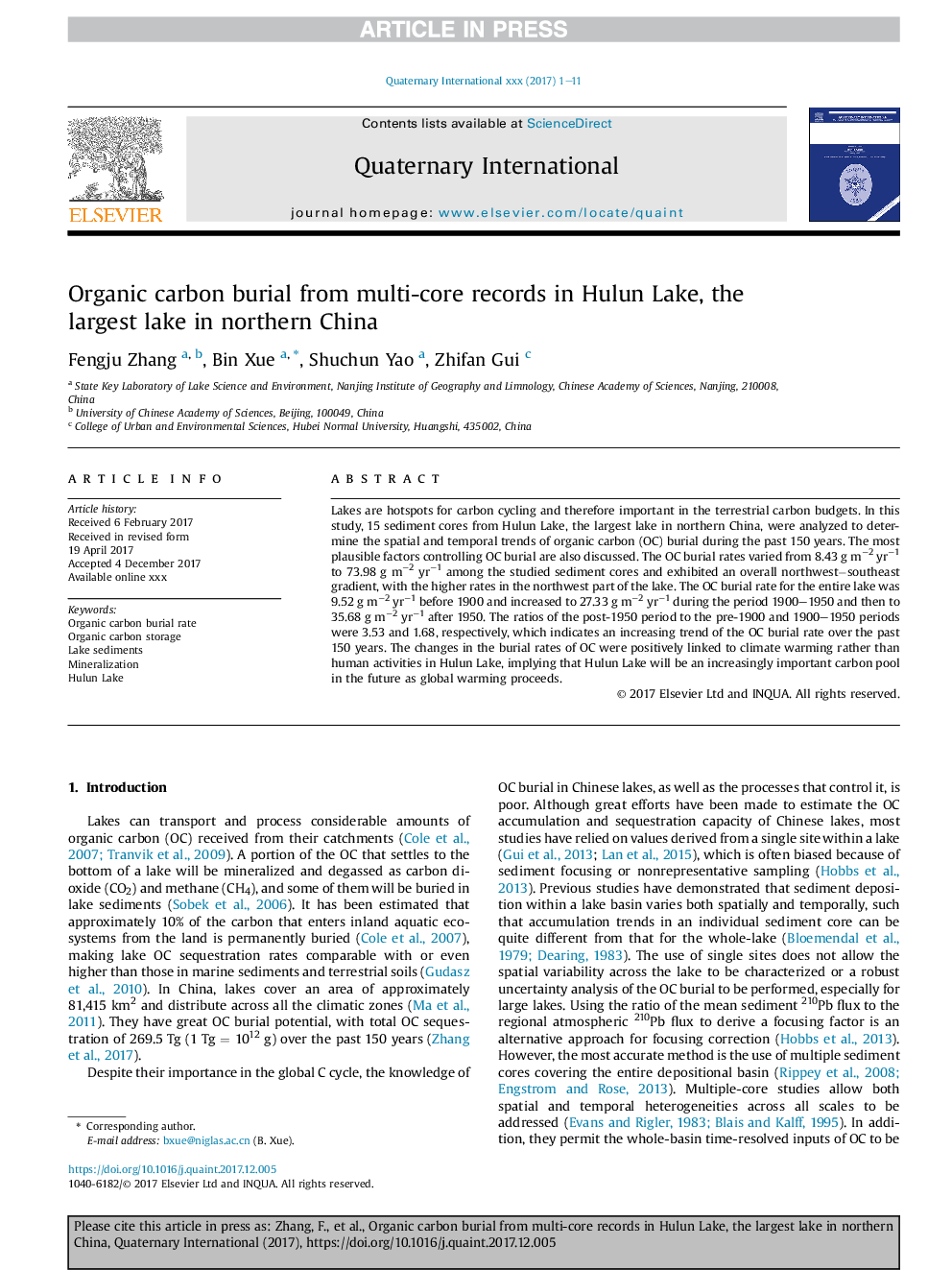| Article ID | Journal | Published Year | Pages | File Type |
|---|---|---|---|---|
| 7449676 | Quaternary International | 2018 | 11 Pages |
Abstract
Lakes are hotspots for carbon cycling and therefore important in the terrestrial carbon budgets. In this study, 15 sediment cores from Hulun Lake, the largest lake in northern China, were analyzed to determine the spatial and temporal trends of organic carbon (OC) burial during the past 150 years. The most plausible factors controlling OC burial are also discussed. The OC burial rates varied from 8.43 g mâ2 yrâ1 to 73.98 g mâ2 yrâ1 among the studied sediment cores and exhibited an overall northwestâsoutheast gradient, with the higher rates in the northwest part of the lake. The OC burial rate for the entire lake was 9.52 g mâ2 yrâ1 before 1900 and increased to 27.33 g mâ2 yrâ1 during the period 1900-1950 and then to 35.68 g mâ2 yrâ1 after 1950. The ratios of the post-1950 period to the pre-1900 and 1900-1950 periods were 3.53 and 1.68, respectively, which indicates an increasing trend of the OC burial rate over the past 150 years. The changes in the burial rates of OC were positively linked to climate warming rather than human activities in Hulun Lake, implying that Hulun Lake will be an increasingly important carbon pool in the future as global warming proceeds.
Related Topics
Physical Sciences and Engineering
Earth and Planetary Sciences
Geology
Authors
Fengju Zhang, Bin Xue, Shuchun Yao, Zhifan Gui,
